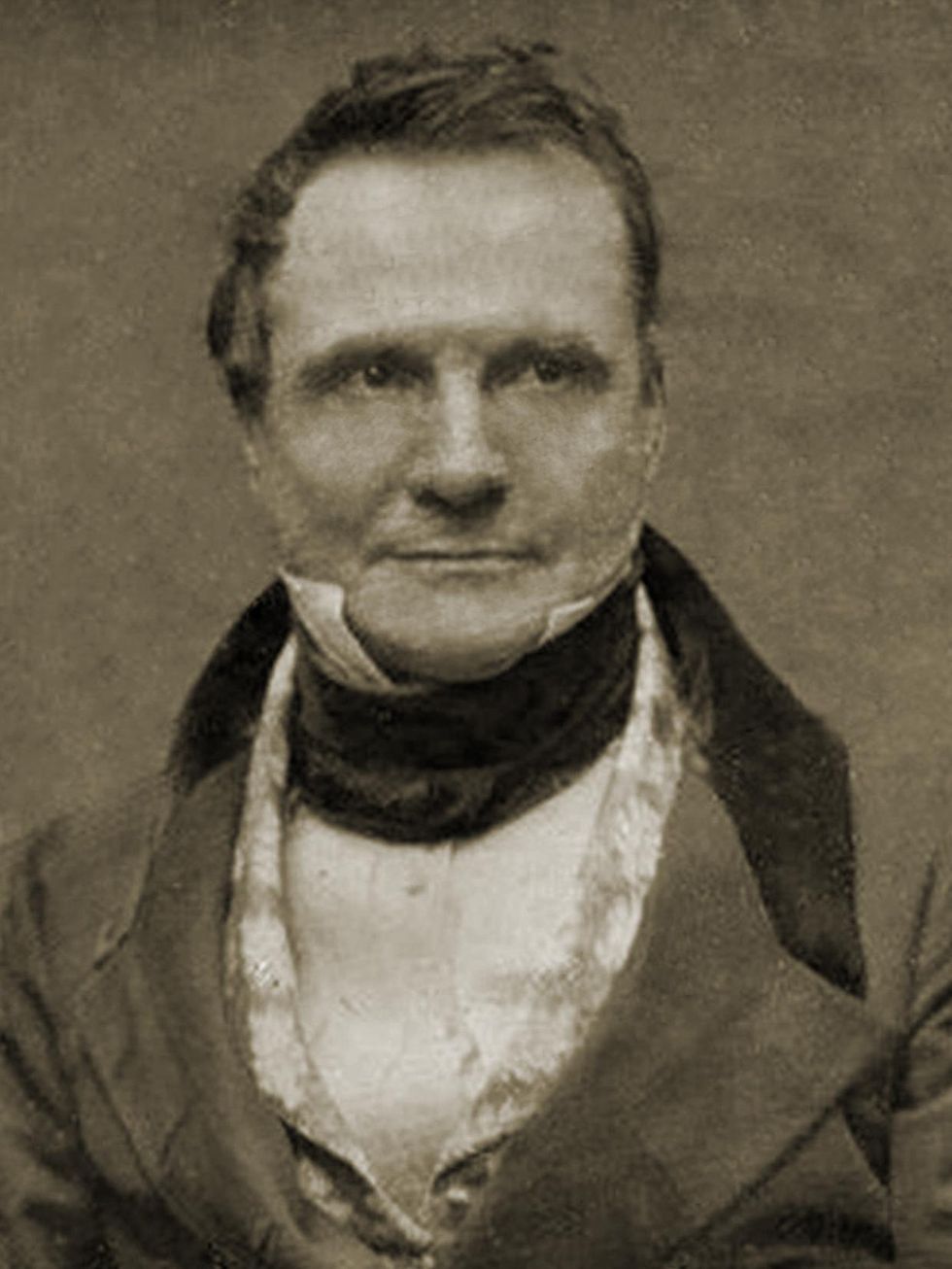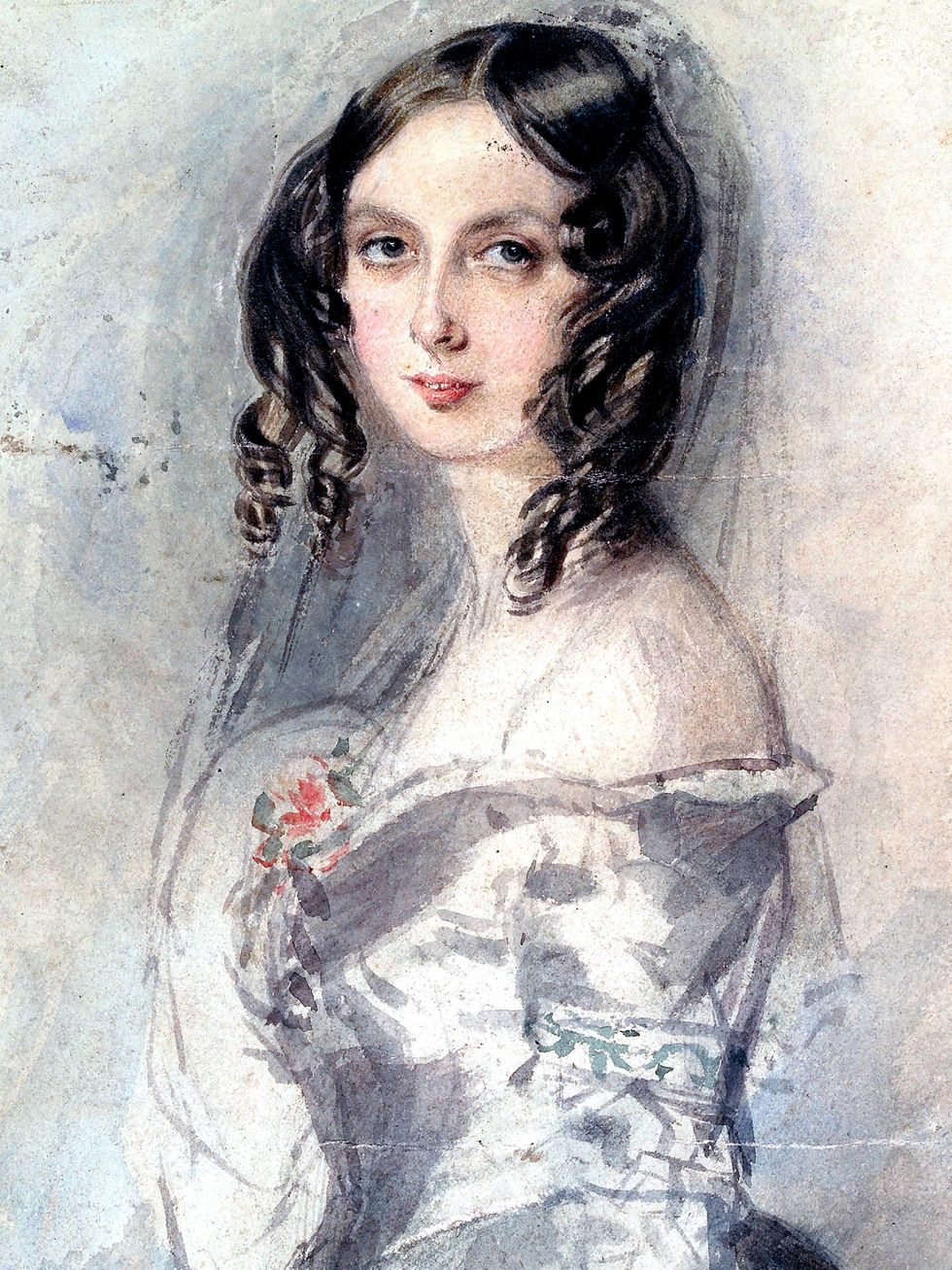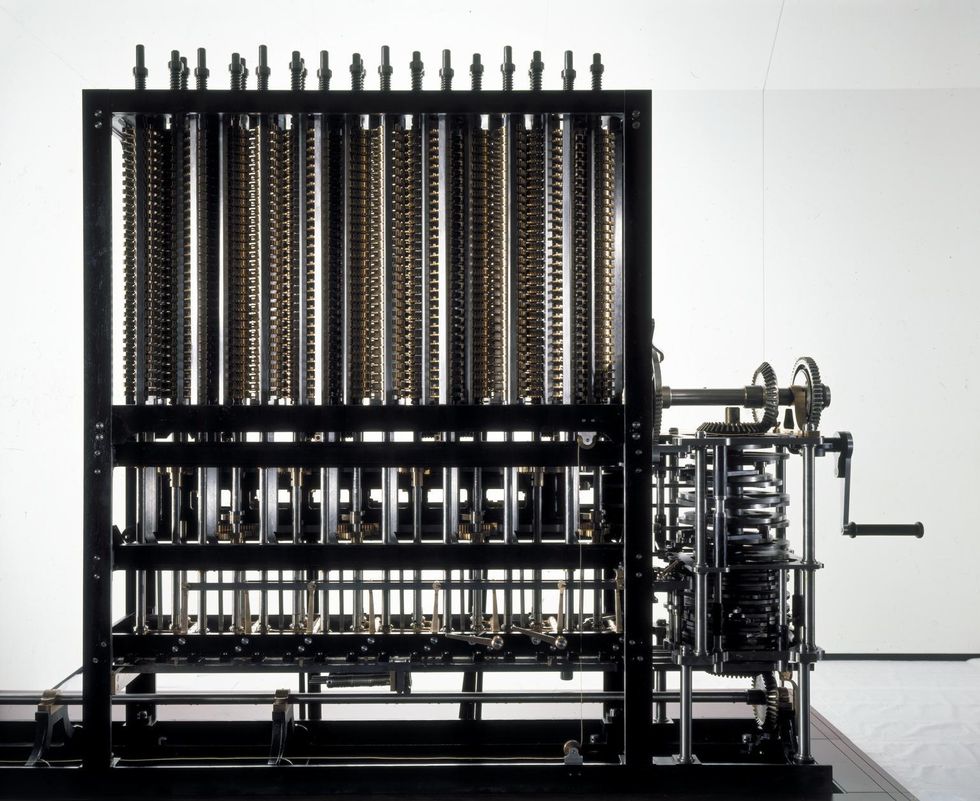Charles Babbage’s Difference Engine Turns 200

It was an idea born of frustration, or at least that's how Charles Babbage would later recall the events of the summer of 1821. That fateful summer, Babbage and his friend and fellow mathematician John Herschel were in England editing astronomical tables. Both men were founding members of the Royal Astronomical Society, but editing astronomical tables is a tedious task, and they were frustrated by all of the errors they found. Exasperated, Babbage exclaimed, I wish to God these calculations had been executed by steam." To which Herschel replied, It is quite possible.
Babbage and Herschel were living in the midst of what we now call the Industrial Revolution, and steam-powered machinery was already upending all types of business. Why not astronomy too?
Babbage set to work on the concept for a Difference Engine, a machine that would use a clockwork mechanism to solve polynomial equations. He soon had a small working model (now known as Difference Engine 0), and on 14 June 1822, he presented a one-page Note respecting the Application of Machinery to the Calculation of Astronomical Tables" to the Royal Astronomical Society. His note doesn't go into much detail-it's only one page, after all-but Babbage claimed to have repeatedly constructed tables of squares and triangles of numbers" as well as of the very specific formula x2 + x + 41. He ends his note with much optimism: From the experiments I have already made, I feel great confidence in the complete success of the plans I have proposed." That is, he wanted to build a full-scale Difference Engine.
Perhaps Babbage should have tempered his enthusiasm. His magnificent Difference Engine proved far more difficult to build than his note suggested.
It wasn't for lack of trying, or lack of funds. For Babbage managed to do something else that was almost as unimaginable: He convinced the British government to fund his plan. The government saw the value in a machine that could calculate the many numerical tables used for navigation, construction, finance, and engineering, thereby reducing human labor (and error). With an initial investment of 1,700 in 1823 (about US $230,000 today), Babbage got to work.
The Difference Engine was a calculator with 25,000 parts The 19th-century mathematician Charles Babbage's visionary contributions to computing were rediscovered in the 20th century.The Picture Art Collection/Alamy
The 19th-century mathematician Charles Babbage's visionary contributions to computing were rediscovered in the 20th century.The Picture Art Collection/Alamy
Babbage based his machine on the mathematical method of finite differences, which allows you to solve polynomial equations in a series of iterative steps that compare the differences in the resulting values. This method had the advantage of requiring simple addition only, which was easier to implement using gear wheels than one based on multiplication and division would have been. (The Computer History Museum has an excellent description of how the Difference Engine works.) Although Babbage had once dreamed of a machine powered by steam, his actual design called for a human to turn a crank to advance each iteration of calculations.
Difference Engine No. 1 was divided into two main parts: the calculator and the printing mechanism. Although Babbage considered using different numbering systems (binary, hexadecimal, and so on), he decided to stick with the familiarity of the base-10 decimal system. His design in 1830 had a capacity of 16 digits and six orders of difference. Each number value was represented by its own wheel/cam combination. The wheels represented only whole numbers; the machine was designed to jam if a result came out between whole numbers.
As the calculator cranked out the results, the printing mechanism did two things: It printed a table while simultaneously making a stereotype mold (imprinting the results in a soft material such as wax or plaster of paris). The mold could be used to make printing plates, and because it was made at the same time as the calculations, there would be no errors introduced by humans copying the results.
Difference Engine No. 1 contained more than 25,000 distinct parts, split roughly equally between the calculator and the printer. The concepts of interchangeable parts and standardization were still in their infancy. Babbage thus needed a skilled craftsman to manufacture the many pieces. Marc Isambard Brunel, part of the father-and-son team of engineers who had constructed the first tunnel under the Thames, recommended Joseph Clement. Clement was an award-winning machinist and draftsman whose work was valued for its precision.
Babbage and Clement were both brilliant at their respective professions, but they often locked horns. Clement knew his worth and demanded to be paid accordingly. Babbage grew concerned about costs and started checking on Clement's work, which eroded trust. The two did produce a portion of the machine [shown at top] that was approximately one-seventh of the complete engine and featured about 2,000 moving parts. Babbage demonstrated the working model in the weekly soirees he held at his home in London.
The machine impressed many of the intellectual society set, including a teenage Ada Byron, who understood the mathematical implications of the machine. Byron was not allowed to attend university due to her sex, but her mother supported her academic interests. Babbage suggested several tutors in mathematics, and the two remained correspondents over their lifetimes. In 1835, Ada married William King. Three years later, when he became the first Earl of Lovelace, Ada became Countess of Lovelace. (More about Ada Lovelace shortly.)
Despite the successful chatter in society circles about Babbage's Difference Engine, trouble was brewing-cost overruns, political opposition to the project, and Babbage and Clement's personality differences, which were causing extreme delays. Eventually, the relationship between Babbage and Clement reached a breaking point. After yet another fight over finances, Clement abruptly quit in 1832.
The Analytical Engine was a general-purpose computer Ada Lovelace championed Charles Babbage's work by, among other things, writing the first computer algorithm for his unbuilt Analytical Engine.Interim Archives/Getty Images
Ada Lovelace championed Charles Babbage's work by, among other things, writing the first computer algorithm for his unbuilt Analytical Engine.Interim Archives/Getty Images
Despite these setbacks, Babbage had already started developing a more ambitious machine: the Analytical Engine. Whereas the Difference Engine was designed to solve polynomials, this new machine was intended to be a general-purpose computer. It was composed of several smaller devices: one to list the instruction set (on punch cards popularized by the Jacquard loom); one (called the mill) to process the instructions; one (which Babbage called the store but we would consider the memory) to store the intermediary results; and one to print out the results.
In 1840 Babbage gave a series of lectures in Turin on his Analytical Engine, to much acclaim. Italian mathematician Luigi Federico Menabrea published a description of the engine in French in 1842, Notions sur la machine analytique." This is where Lady Lovelace returns to the story.
Lovelace translated Menabrea's description into English, discreetly making a few corrections. The English scientist Charles Wheatstone, a friend of both Lovelace and Babbage, suggested that Lovelace augment the translation with explanations of the Analytical Engine to help advance Babbage's cause. The resulting Notes," published in 1843 in Richard Taylor's Scientific Memoirs, was three times the length of Menabrea's original essay and contained what many historians consider the first algorithm or computer program. It is quite an accomplishment to write a program for an unbuilt computer whose design was still in flux. Filmmakers John Fuegi and Jo Francis captured Ada Lovelace's contributions to computing in their 2003 documentary Ada Byron Lovelace: To Dream Tomorrow. They also wrote a companion article published in the IEEE Annals of the History of Computing, entitled Lovelace & Babbage and the Creation of the 1843 Notes'."
Although Lovelace's translation and Notes" were hailed by leading scientists of the day, they did not win Babbage any additional funding. Prime Minister Robert Peel had never been a fan of Babbage's; as a member of Parliament back in 1823, he had been a skeptic of Babbage's early design. Now that Peel was in a position of power, he secretly solicited condemnations of the Difference Engine. In a stormy meeting on 11 November 1842, the two men argued past each other. In January 1843, Babbage was informed that Parliament was sending the finished portion of Difference Engine No. 1 to the King's College Museum. Two months later, Parliament voted to withdraw support for the project. By then, the government had spent 17,500 (about US $3 million today) and waited 20 years and still didn't have a working machine. You could see why Peel thought it was a waste.
But Babbage, perhaps reinvigorated by his work on the Analytical Engine, decided to return to the Difference Engine in 1846. Difference Engine No. 2 required only 8,000 parts and had a much more elegant and efficient design. He estimated it would weigh 5 tons and measure 11 feet long and 7 feet high. He worked for another two years on the machine and left 20 detailed drawings, which were donated to the Science Museum after he died in 1871.
A modern team finally builds Babbage's Difference Engine In 1985, a team at the Science Museum in London set out to build the streamlined Difference Engine No. 2 based on Babbage's drawings. The 8,000-part machine was finally completed in 2002.Science Museum Group
In 1985, a team at the Science Museum in London set out to build the streamlined Difference Engine No. 2 based on Babbage's drawings. The 8,000-part machine was finally completed in 2002.Science Museum Group
Although Difference Engine No. 2, like all the other engines, was never completed during Babbage's lifetime, a team at the Science Museum in London set out to build one. Beginning in 1985, under the leadership of Curator of Computing Doron Swade, the team created new drawings adapted to modern manufacturing techniques. In the process, they sought to answer a lingering question: Was 19th-century precision a limiting factor in Babbage's design? The answer is no. The team concluded that if Babbage had been able to secure enough funding and if he had had a better relationship with his machinist, the Difference Engine would have been a success.
That said, some of the same headaches that plagued Babbage also affected the modern team. Despite leaving behind fairly detailed designs, Babbage left no introductory notes or explanations of how the pieces worked together. Much of the groundbreaking work interpreting the designs was done by Australian computer scientist and historian Allan G. Bromley, beginning in 1979. Even so, the plans had dimension inconsistencies, errors, and entire parts omitted (such as the driving mechanism for the inking), as described by Swade in a 2005 article for the IEEE Annals of the History of Computing.
The team had wanted to complete the Difference Engine by 1991, in time for the bicentenary of Babbage's birth. They did finish the calculating section by then. But the printing and stereotyping section-the part that would have alleviated all of Babbage's frustrations in editing those astronomical tables-took another nine years. The finished product is on display at the Science Museum.
A duplicate engine was built with funding from former Microsoft chief technology officer Nathan Myhrvold. The Computer History Museum displayed that machine from 2008 to 2016, and it now resides in the lobby of Myhrvold's Intellectual Ventures in Bellevue, Wash.
The title of the textbook for the very first computer science class I ever took was The Analytical Engine. It opened with a historical introduction about Babbage, his machines, and his legacy. Babbage never saw his machines built, and after his death, the ideas passed into obscurity for a time. Over the course of the 20th century, though, his genius became more clear. His work foreshadowed many features of modern computing, including programming, iteration, looping, and conditional branching. These days, the Analytical Engine is often considered an invention 100 years ahead of its time. It would be anachronistic and ahistorical to apply today's computer terminology to Babbage's machines, but he was clearly one of the founding visionaries of modern computing.
Part of a continuing series looking at photographs of historical artifacts that embrace the boundless potential of technology.
An abridged version of this article appears in the June 2022 print issue as The Clockwork Computer."